Tea Ceremony En In Kyoto - Experience The World Of Tea Ceremony

Tea ceremony is a traditional culture of Japan. It can also be seen as a mastering of the art of tea-making as entertainment. In Gion, Kyoto, there is a shop where you can experience this art. Why not experience Japanese culture through tea ceremony?
STEP 1: The History of Tea Ceremony and Explanation of Utensils

First, the person in charge will give an explanation on knowledge necessary for tea ceremony. After briefly touching on the subject of the history of tea ceremony, the participants were taught the way matcha (powdered green tea) is made and prepared as well as its difference from normal tea.
Does everyone know how matcha is made? Nowadays, matcha has come to be used in sweets and is well-known even overseas. It would also be great to deepen your understanding of the tea here.
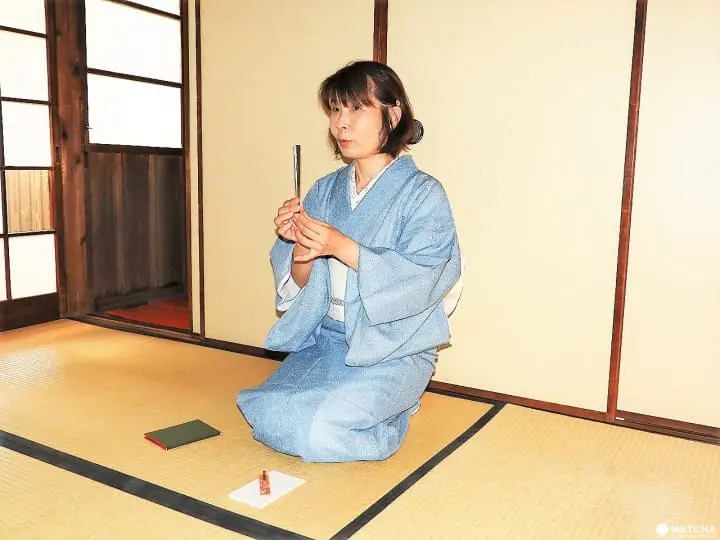
Next, there will be an explanation on the utensils necessary for tea ceremony. The names and roles of the utensils that are brought when invited to a tea gathering and those necessary for making (*2) tea are explained. With this knowledge, you don’t have to be afraid the next time you’re invited to a tea gathering.
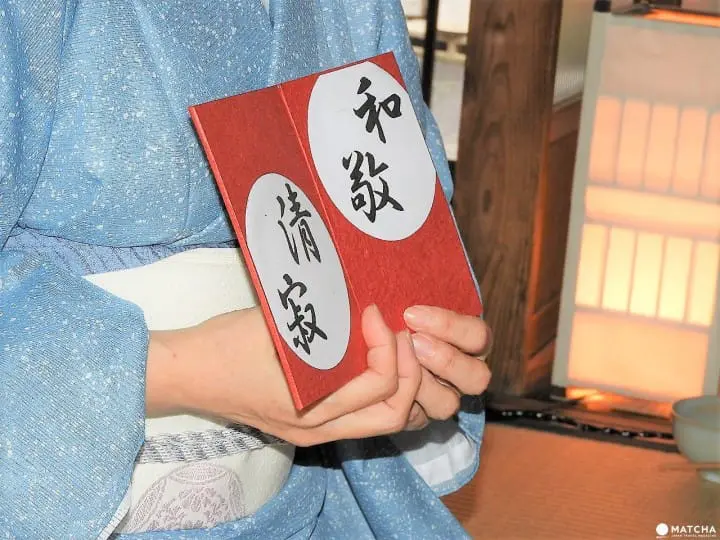
Last is an explanation on the spirit of tea ceremony. Sen no Rikyu, the individual who completed the art of tea ceremony, expressed it in a few words: “Harmony, respect, purity, and tranquility.” The person in charge will thoroughly explain the meaning held by each of these words.
STEP 2: Etiquette Demonstration
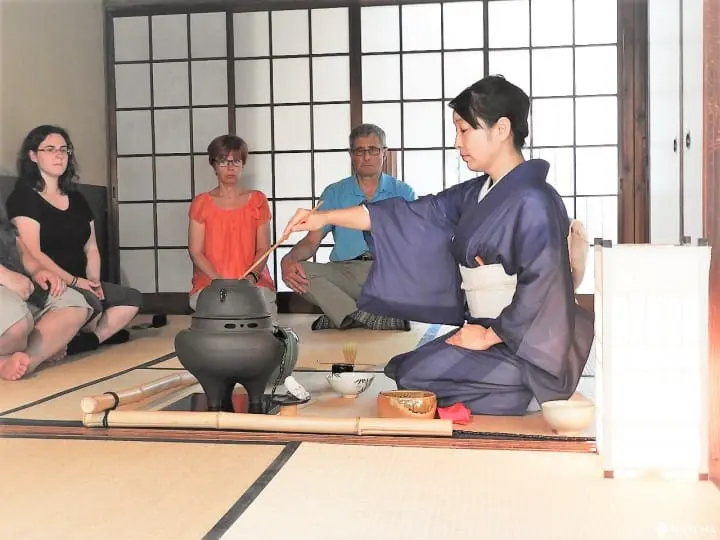
After an explanation on tea ceremony, participants will then observe the instructor’s otemae (*2), the procedure of makingg thea tea for the guests. The tension in the air and the level of alertness of those participating in the experience will be intensified by the instructor’s well-balanced and lack of waste in movements.
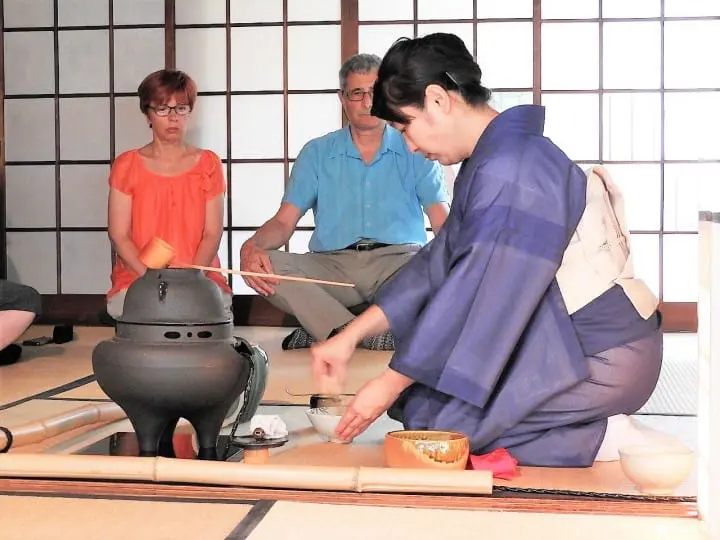
The sound of pouring hot water and of tea being made will sometimes be audible in the silence. Participants can thoroughly feel the spirit of tea ceremony.
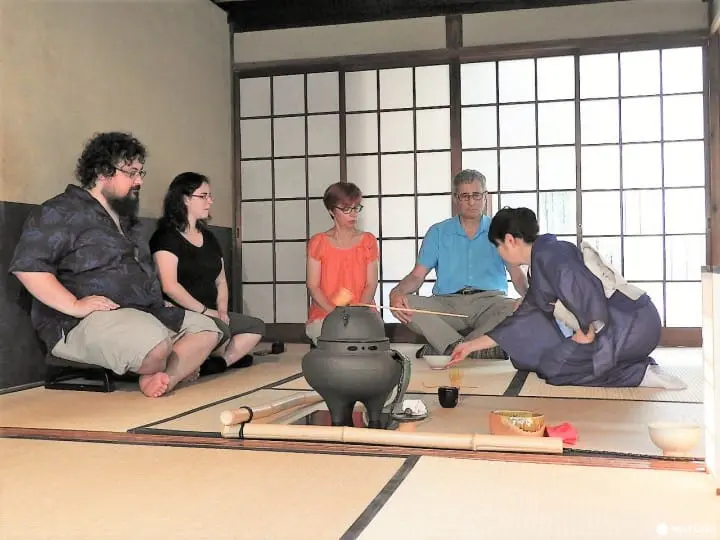
Only one cup was made during the tea ceremony demonstration and was offered to the person sitting in the shokyaku (*3) seat. Everyone sitting in the room is the epitome of seriousness until the instructor leaves the room. The etiquette will vary depending on the instructor, so participants can enjoy slightly different styles of tea ceremony etiquette at the shop.
*1 Tateru (verb): The making of tea.
*2 Otemae: A series of procedures when making tea.
*3 Shokyaku: The main person amongst the guests.
STEP 3: Let’s Try Making Tea!
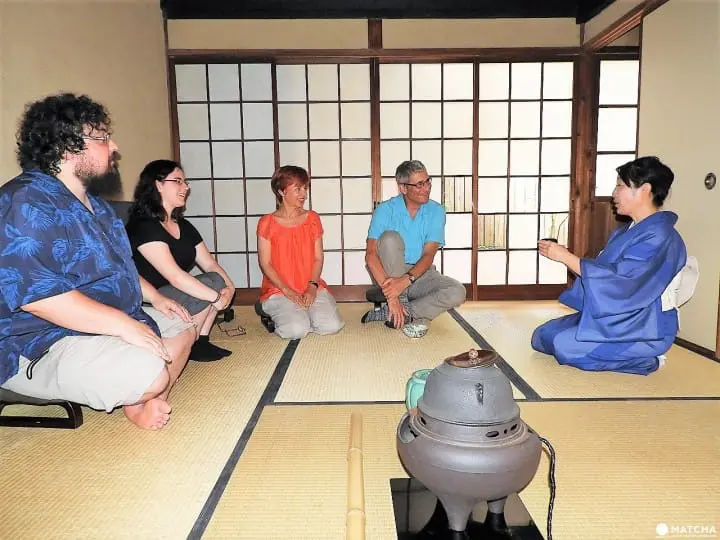
Once the instructor has returned and the participants have discussed their thoughts on the tea ceremony etiquette, the instructor will then explain how to drink tea and enjoy a tea gathering.
Wagashi are indispensable when drinking matcha. Matcha was once consumed as medicine in old Japan. When you think of medicines, they’re bitter, aren’t they? To alleviate the bitter taste of matcha, sweet wagashi are eaten before drinking tea.
Once the atmosphere has become tranquil, those in attendance will now make tea.
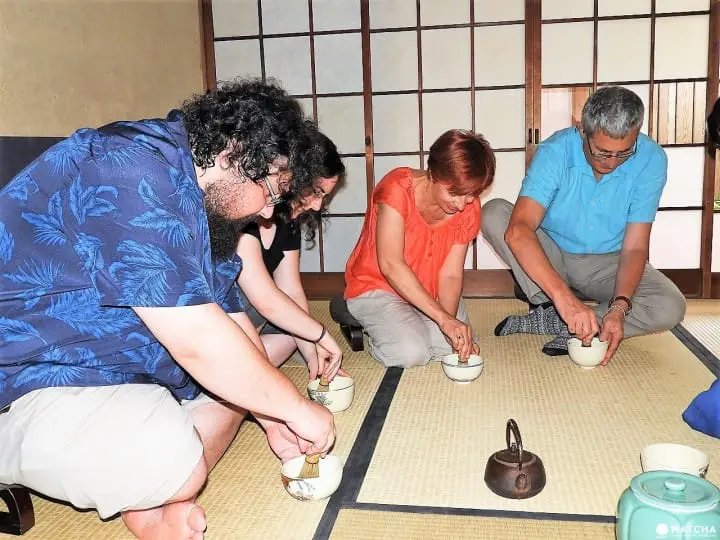
After practicing the motion of holding the chasen (*4), now it’s time to make tea! Participants will hear “faster” and “relax (your movements)” as words of advice from the instructor.

The attendees unanimously agreed, “Tea that I've made by myself is delicious!” Tea ceremony utensils are also sold at the shop, so those interested in continuing to study tea ceremony, or wanting to make their own tea at home can after returning from their trip.
*4 Chasen: A utensil used when making tea.
A Tour Around The Neighboring Shops
A tour to visit an Ukiyo-e specialty shop, an antique kimono shop, and tasting of three-types of Japanese sake is also held every day (excluding January 1st – 3rd).
The tour is held from 10:30 – 12:30. The fee is 5500 yen for adults plus tax and 3000 yen for children (ten years and below). You can also opt to only participate in the sake tasting, which will be 3500 yen plus tax.
How to Make A Reservation
Reservations can be made through tie-up hotels or tourism associations, but we recommend making your reservations through e-mail. Include your name, the number of people, preferred date and time, and whether it will be a group or private experience in your e-mail and send it to info@teaceremonyen.com. For more details, please check the official website.
Reservations become full especially during the spring and autumn, so it is best to make a reservation as soon as possible.
In Conclusion

There is a phrase in tea ceremony that goes “ichi-go ichi-e.” The phrase means a once-in-a-lifetime encounter and originates from the fact that the time and people gathered at a tea ceremony are an something that only occurs once in a lifetime and will never repeat again.
Even in the tea ceremony experience in this article, there were people that had come from various countries such as France and Canada who were able to spend time together in a situation that will likely never happen again. It may feel like something difficult to understand, but it’s because you enjoy the tea ceremony hospitality that you will come to understand its appeal. Definitely please try and experience tea ceremony in Japan.
Made in cooperation with Tea Ceremony En
奈良生まれの旅好きライター。日本の魅力を世界の人々に伝えていきたいです。







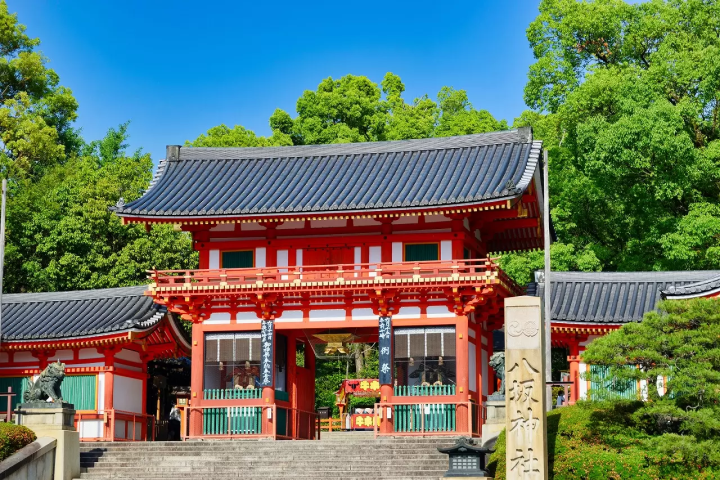
































![[Traveling with a baby in Japan] Directly connected to the station! Rent a stroller at JR EAST TRAVEL SERVICE CENTER](https://resources.matcha-jp.com/resize/720x2000/2024/12/03-213323.webp)
![[2025] 4 Recommended Spots for Viewing Autumn Leaves in Tokushima, Naruto| Best Time to See, Highlights, and Access](https://resources.matcha-jp.com/resize/720x2000/2025/11/28-251301.webp)
![[During Your Kumano Trip] Cape Shionomisaki Tourist Tower](https://resources.matcha-jp.com/resize/720x2000/2025/11/05-249097.webp)
![[TICKET INTRODUCTION] Small Worlds Miniature Museum](https://resources.matcha-jp.com/resize/720x2000/2025/11/28-251446.webp)
![[Yamanashi, Yatsugatake] A specialty of the Kiyosato Plateau! Seisenryo soft serve ice cream🍦](https://resources.matcha-jp.com/resize/720x2000/2024/03/19-173634.webp)